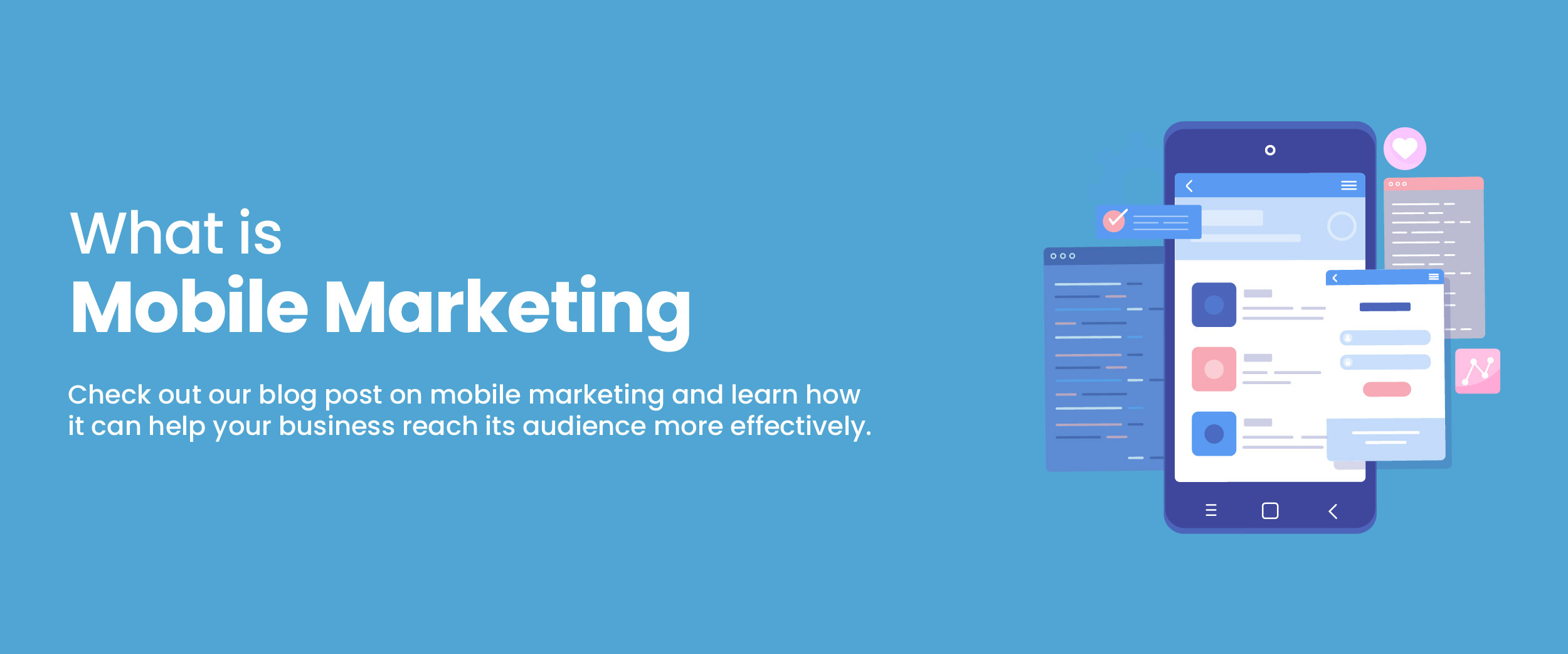What Is Mobile Marketing?
According to studies, 84.2% of the population will be able to access the internet on their mobile devices in the next 2-3 years. Businesses can use this to their advantage as they can advertise their products through mobile marketing. So, what is mobile marketing?
Mobile marketing is a digital marketing approach that targets smartphone and tablet users through multiple channels. These channels include mobile apps, social networking platforms, SMS, mobile websites, and push notifications. In this blog, we will learn about mobile marketing, its features, types, and more.
Mobile Marketing: An Overview
Mobile marketing aims to engage and connect with consumers and prospects on their mobile devices. It is done to advertise a product or service or to generate traffic to a website or physical location. Location-based marketing, mobile search advertisements, mobile display ads/video ads, and mobile affiliate marketing are all examples of mobile marketing approaches.
Mobile marketing has become essential to many organizations’ overall marketing efforts. The objective is to reach consumers and potential customers where they are readily available, i.e., on their mobile devices.
Types of Mobile Marketing
Mobile marketing includes a variety of tactics for connecting with clients and prospects via their mobile devices. Some of the most popular forms of mobile marketing are:
- SMS: SMS is a highly focused method of reaching out and communicating with consumers and prospects about special offers, appointments, and other promotions. Businesses can text clients who have opted to receive these texts with special deals, promotions, and reminders.
- Push Notifications: On mobile devices, push notifications are a potent tool for interacting with consumers and potential customers. Even if customers are not actively using an app or website, businesses can send notifications with special deals and reminders to their mobile devices.
- Mobile Apps: Businesses can either establish their mobile apps or advertise on already-existing apps. To encourage customers to interact with the company, mobile applications can include various services like loyalty programs, promotions, and special offers.
- Mobile Search Ads: Businesses can place advertisements on mobile search engines like Google to reach users looking for products or services. Mobile search ads can be targeted based on geography, demographics, and interests.
- Location-Based Marketing: Using the GPS feature of mobile devices, location-based marketing sends customers relevant messages and promotions based on their location. Local businesses or those with physical sites may find this particularly effective.
- Affiliate Marketing: Partnering with other businesses or influencers to offer goods or services to their audiences via mobile devices is known as mobile affiliate marketing. Social media sites, mobile applications, and other platforms can all be used for this.
You can learn more about mobile marketing, its types, and tools by taking this in-depth digital marketing course.
Features of Mobile Marketing
Following are some of the key features of mobile marketing:
- Personalization: User information from mobile marketing, including past purchases, location, and browsing history, can help businesses tailor messages to individual customers. Customization can boost consumer loyalty and engagement.
- Targeted Marketing: It targets specific audiences based on demographics, location, and interests. It also enables businesses to communicate with the right audience, increasing conversion rates and return on investment (ROI).
- Real-Time Communication: Real-time communication is made possible by the fact that mobile devices are always in our possession. Customers can receive real-time push alerts, SMS messages, and other messaging from businesses. This increases engagement and creates a sense of urgency.
- Accessibility: Nearly everyone has access to mobile devices, irrespective of their location or socioeconomic level. Mobile marketing can reach consumers who might not have access to traditional marketing channels.
- Analytics: Companies can track and analyze customer data through mobile marketing, including app usage, click-through rates, and past purchases. This can improve the ROI and marketing strategies.
Examples of Mobile Marketing
As more and more people are gaining access to mobile devices, mobile marketing is becoming an increasingly important part of the overall marketing strategy. Many companies have already used this strategy. Some of the examples are:
- Nike: To provide customers with individualized workouts depending on their fitness level, goals, and preferences, Nike released its Nike Training Club App. The app offers tips on diet and wellness and social media integration for extra encouragement. By giving value beyond just selling things, the app has been downloaded more than 20 million times. It has also assisted Nike in developing close relationships with its users.
- Ikea: Using augmented reality technology, users of the Ikea Place App may see how Ikea furniture would look in their homes. Customers may virtually arrange furniture in their homes, and the app will display how it will look in reality. With over 8 million downloads, the app has been a big hit and has helped Ikea give its customers a distinctive shopping experience.
- Starbucks: Customers at Starbucks can order and pay for their drinks using a mobile device, thanks to the company’s Mobile Order and Pay service. Customers can customize their drinks, save their favorite orders, and use the app to detect store locations. Starbucks’ app has been a great hit, boosting sales and cutting down on in-store lines.
Conclusion
Mobile marketing provides businesses with a bigger platform for advertising. There are many mobile marketing tools that they can use to make marketing easier. These tools help them get better conversion rates and build brand loyalty. They also help reach out to the target audience and limit budget spending.






